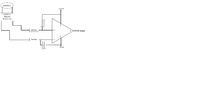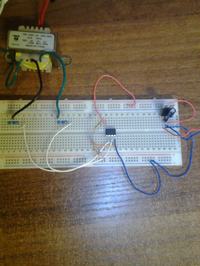KhaledOsmani
Full Member level 6

They are of little consequence, except that limit current in case of a latch-up. You can use any value from 1K to 10K (hence 4K is good value). The best accuracy is obtained when the input voltage is close to 1V. You can clamp the input voltage with a zener and work on the software.
What about the bias resistors? same conditioning? From another part, I`m worried that the VT has the following ratings: 220/6V , means that its outputs is under minor cases still bigger than 5V, wouldn't this affect maximum limitations for ADC inputs?
Still, there aren't any rectifiers, and according to KlausST it is not a problem as long as Voutmax is withing margins.








